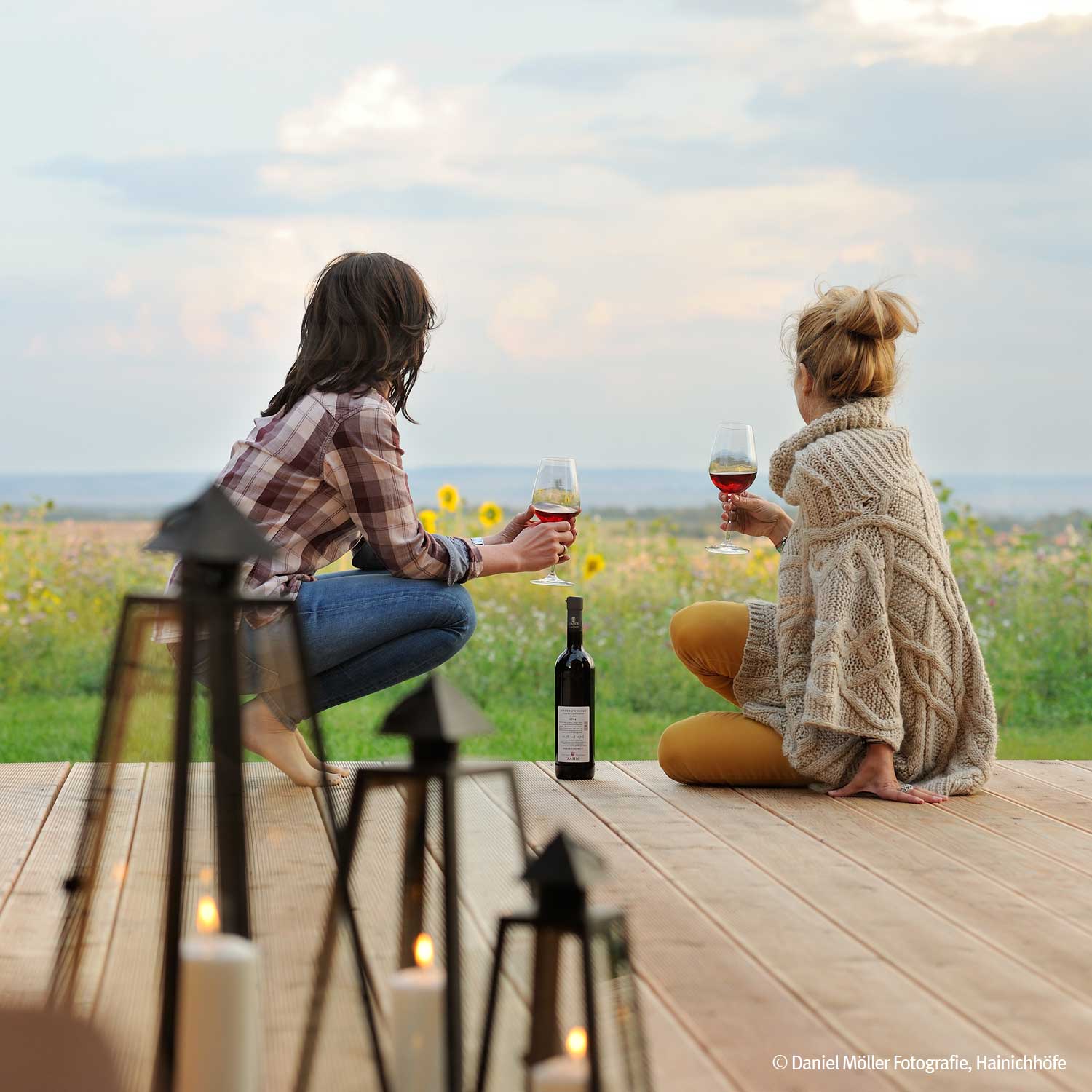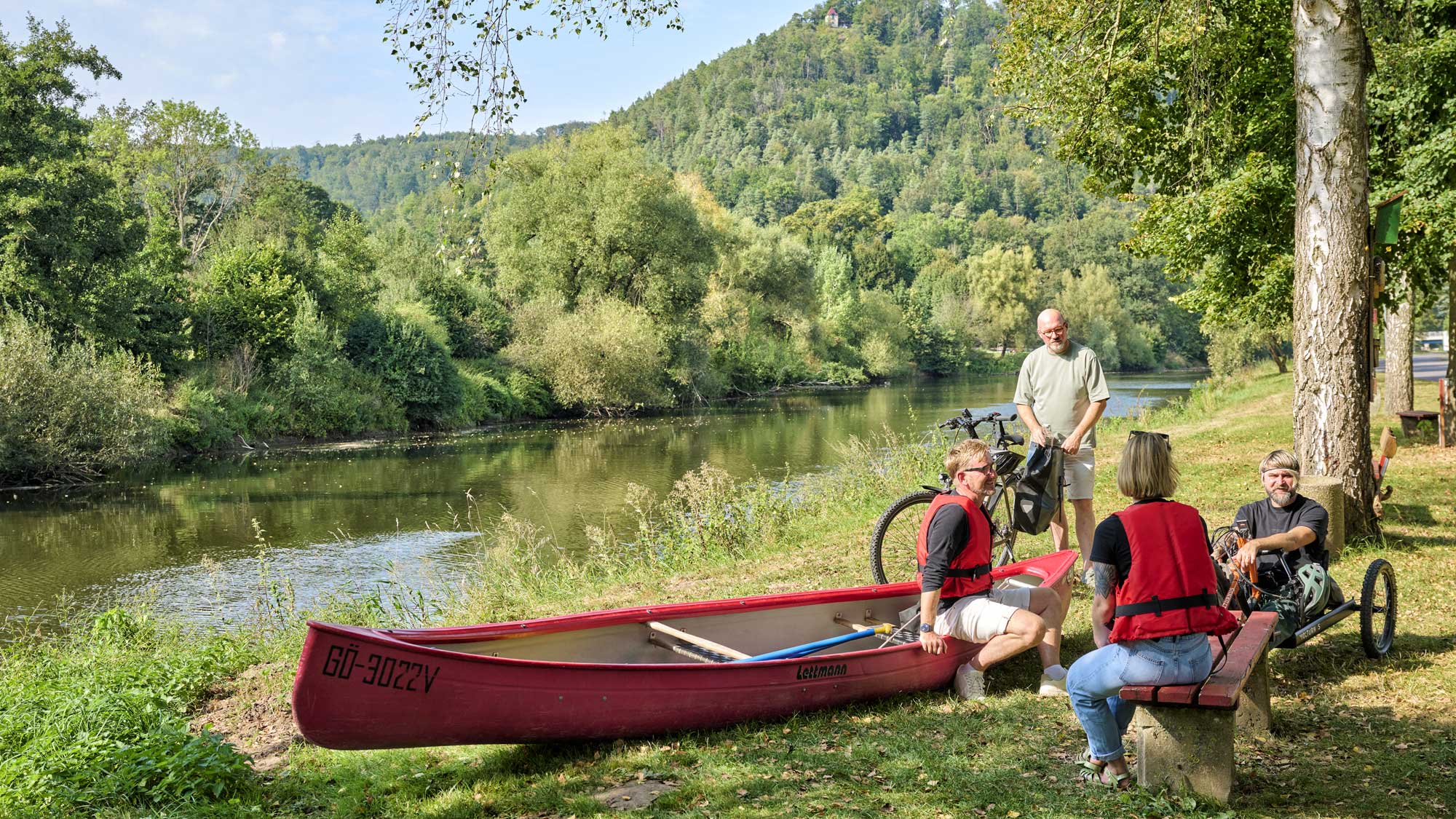You're in the right place! Whether in nature, in the middle of the city, for families, in the countryside, historic or traditional: among Thuringia's TOP hosts, everyone will find exactly the right address.
Three times the same and always different
Three Equals
Threatening clouds gathered over the land on the last evening of May in the year of our Lord 1231. The farmers had already brought the cattle into their stalls early, and the people were now looking fearfully towards the horizon, where the three castles appeared to shrink away from the stormy sky. And then the muffled sound of thunder rolled over the plane, it began to rain and the full wrath of heaven was discharged. Later, people said that the very first bolt of lightning came down to the earth like a trident and hit all three fortresses in one stroke. Shortly afterwards, the castles were ablaze – they burned like three equal torches up on their hills. The people crossed themselves because they believed that the end of the world had come.
Almost one thousand years later, the world is still here – and the castles are also still standing on their hills: three beacons that no one who is out and about in the region can ignore. Especially hikers: hiking from castle to castle is a popular one-day route that combines Thuringia’s nature with its history and culture. Because each of the three fortresses provides a view of the other two, there is not really any need for signposts on the 15-kilometre route between the Three Equals: the next stop is always enthroned on the hill in front of you.
The route begins and ends in Mühlberg at the foot of the Mühlburg castle hill, a small town with a narrow brook gurgling between its historical buildings. From here, the route starts by going through the town and across to Burg Gleichen, which was once the residence of a powerful dynasty of counts. What a magnificent ruin! All the walls of the large hall are still standing, there are old trees standing in the vast castle courtyard, and Ulf Krausse can be seen standing on the steps of the tower. He is the castle’s custodian and someone who clearly does his job with a lot of enthusiasm for the old walls. Have you visited the museum? Did you see the thousand-year-old toy figure that the archaeologists found? And did you see the ghost?
There is – of course! – also supposed to be a castle ghost haunting Veste Wachsenburg, the second in the trio, which can be reached via a long passage through the fields. It too is more than one thousand years old, but it was extended and renovated so often by its owners over the years that it now looks like one of those castles that children draw in their first year of school, only to be told by the teacher that no real castle looks like that. But this one does! Brown walls, red roofs, a large tower in the centre, small towers on the perimeter, a bulwark, a real stronghold, a castle that looks like it has emerged from the pages of a picture book from the era of German Romanticism. There has been a hotel and a restaurant here since the 1960s, and there is, of course, also a story surrounding the castle: the skull of a noblewoman set with precious stones is supposed to be hidden somewhere deep in the castle vaults. The marauding knight Apel Vitzthum the Elder of Rossla (what a name!) desired the beauty, but she did not want to give herself to him. The result was inevitable: Apel was not happy. He had the noble maiden killed and later hid her decorated skull. She in turn got her revenge by haunting the castle as a ghost from that point onwards. You can then enjoy reflecting on such stories for the rest of the route. Conveniently, the hiking trail leads from Wachsenburg through the dark pine forest, where the old legends will buzz around in your mind even more intensively.
The path to the ruins of the Mühlburg, Thuringia’s oldest stronghold (construction started in around 531), leads slowly but stadily uphill to the castle hill . You will have to sit down when you reach the top. Because you are out of breath. Because the panorama stretches out so incredibly far in front of you, including neatly staggered fleecy clouds and a blue summer’s sky. And because you realise how high you have climbed in the past hour. In the Middle Ages, a location on the top of a hill was a criterion that was essential to a castle’s survival: the higher the site of the stronghold, the earlier it was possible to make out advancing enemies in the distance. And the steeper and more rugged the hill beneath the castle was, the more problems these enemies had. Hikers also need to be in good shape here.
And if you then ask the landlord, whilst you are enjoying dinner in Mühlberg after the hike, whether he knows one of these old legends, he is sure to be able to tell you one that you have not yet heard on the route from castle to castle.
Accessibility
Did you like this story?
You might also be interested in ...












